What Thai Appetizers and Thai Snack dishes are taught in the Professional Thai Cuisine Programme at Le Cordon Bleu Dusit?
At Le Cordon Bleu Dusit there are a wide variety of Thai snacks in the program. The basic dishes are simple and uncomplicated. The dishes that requires basic skills and steps to make, such as: Tapioca pearl balls stuffed with minced pork and peanuts (Sagu Sai Moo), Steamed rice sheets with minced pork and peanuts (Khao Grueb Park Mor), Wild pepper leaves with Miang Kham sauce and condiments (Miang Kham), Pineapple morsels topped with minced chicken and peanuts (Ma Hor), Purple dumplings with sweet winter melon filling (Khanom Cho Muang), Thai dumplings in the shape of a bird (Kha Nom Jeep Rup Nok), Thai steamed dumplings (Pan Sib Nueng), Crispy golden cups with chicken filling (Krathong Thong), Deep fried minced pork wrapped with noodle (Moo Sarong), Deep fried taro paste stuffed with prawn and coconut flesh (Khang Khao Phuek), Minced pork and prawn wrapped with an egg net (La Tieng), etc., which we will start learning from the simple basic dishes, in order to lay the foundation for knowledge and understanding of raw materials, preparation and basic techniques in the first term. Then we will learn Thai snack dishes that require complicated skills and procedures, including more refinement in the third and final term. Some dishes will require patience and practice to become proficient, leading to perfection. So we gradually let you learn step by step from easy to more complex.
Why do you think “Thai snacks” such as Ma Hor, La Tieng, Moo Sarong, Chao Muang, etc., have returned to be popular in this era? Especially in both traditional and modern Thai restaurants, from fine dining, chef's tables, to various cafes.
The popularity of Thai snack dishes nowadays, such as: Ma Hor, Moo Sarong, Cho Muang, La Tieng and other dishes are considered as delights of Thai food that people know today, have the opportunity to eat and have access to a wider variety of Thai snack dishes. This may be due to the marketing style and communication with various online media that allow consumers to see the picture and nature of these dishes more clearly than they have heard of the name, and these dishes are exquisitely made with a beautiful appearance. Some dishes with unusual names and appearances may be more in the spotlight, such as Ma Hor or La Tieng, or some types are exquisitely beautiful, such as Chao Muang and Kha Nom Jeeb Rup Nok. In addition to eating delicious food, you can also take pictures to share your experiences with others. These factors should help make restaurants such as cafes, fine dining or chef's tables adopt it and use it as a dish in their shop to add more interest and options to customers.
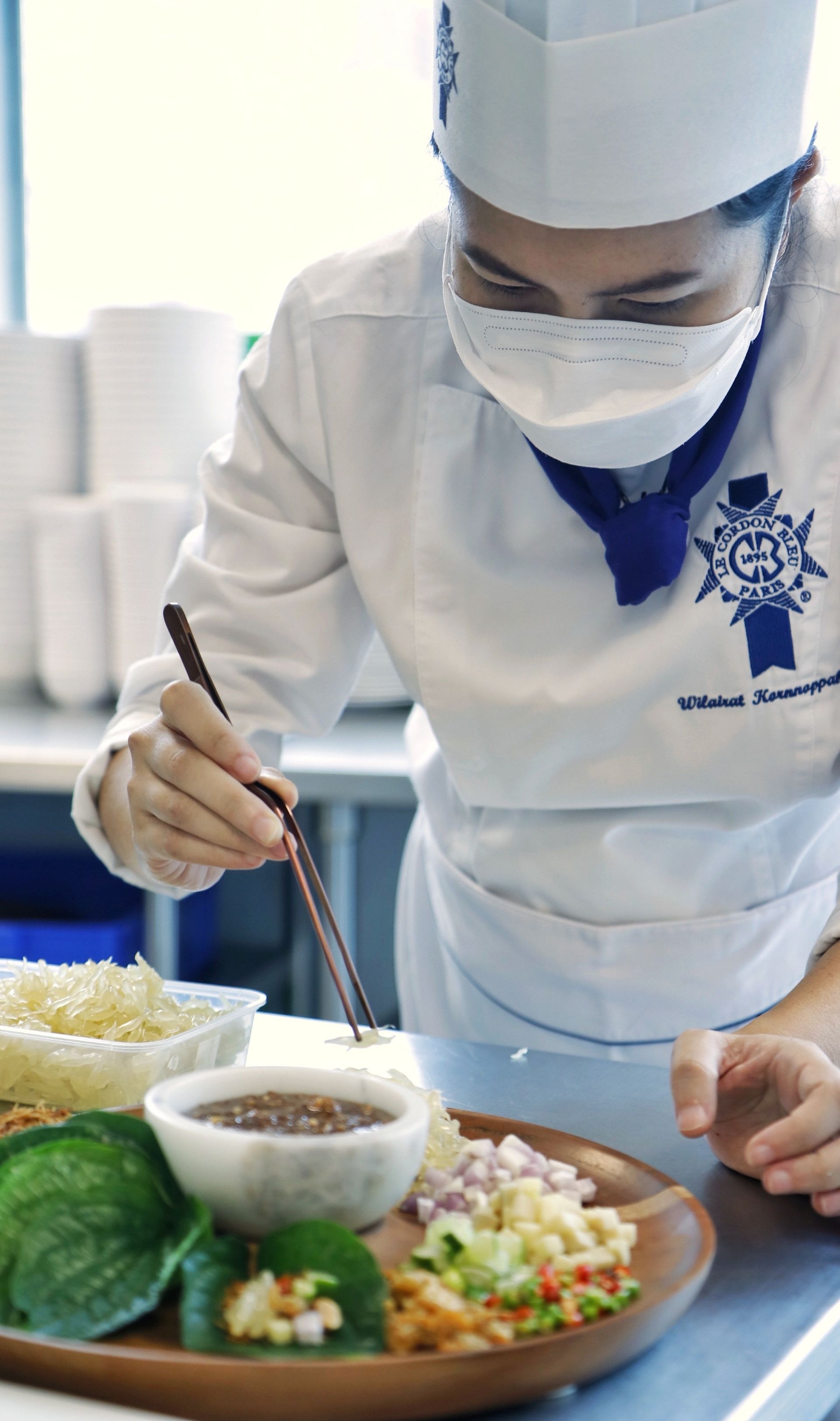
In addition, some dishes have a history or a meticulous process that can be used as a story to tell customers while serving, to create more of a dining experience, and the process of making the elaborate work that tells the chef's story through the food or the description of the dish. It is another selling point that makes the shop more interesting as well.
With a selection of Thai appetizers being served along with good presentation and model marketing, coupled with the lifestyle of today’s consumers, eating clean, delicious food and having a full stomach, it is about creating a new experience in eating. Knowing the origin of food makes consumers understand the food and enjoy it more, therefore eating more! It is probably a factor that makes Thai snack dishes still popular and more accessible in modern times.
What do you think is the uniqueness and charm of Thai snacks?
The charm of Thai snacks should be in the refinement. Meticulous selection of raw materials, using cooking techniques to create a dish that is perfect in shape, taste, smell and touch, making it unique. Also, the use of seasonal ingredients and choosing the right dishes for the different times and seasons of Thailand, taking into account the characteristics of eating. It is probably what makes Thai snacks unique, due to careful attention to detail.
How is it different from Western or other national appetizers?
If asked about the difference between Thai snacks and Western appetizers we must keep them separate because the characteristics and timing of eating change because snacks are eaten between the main meals. Appetizers will be the first dish to start your meal and help stimulate your appetite. Therefore, when talking about Thai snacks in the context of eating between meals, it would be different from Western appetizers. The Thai snacks that are eaten between meals can be designed so that the course of Thai snacks is complete in terms of form, taste, smell, touch, and is perfectly consistent with the place and the season.
However, nowadays, in restaurants that serve food styles that are similar to Western food, it is popular to choose Thai snacks to serve as an appetizer which also stimulates the appetite. Maybe a dish or two before starting the next course. Therefore, by understanding the format and context to be presented, and choosing a Thai snack in accordance with the meal, it is likely that the Thai snack dish can be used in a variety of contemporary ways.
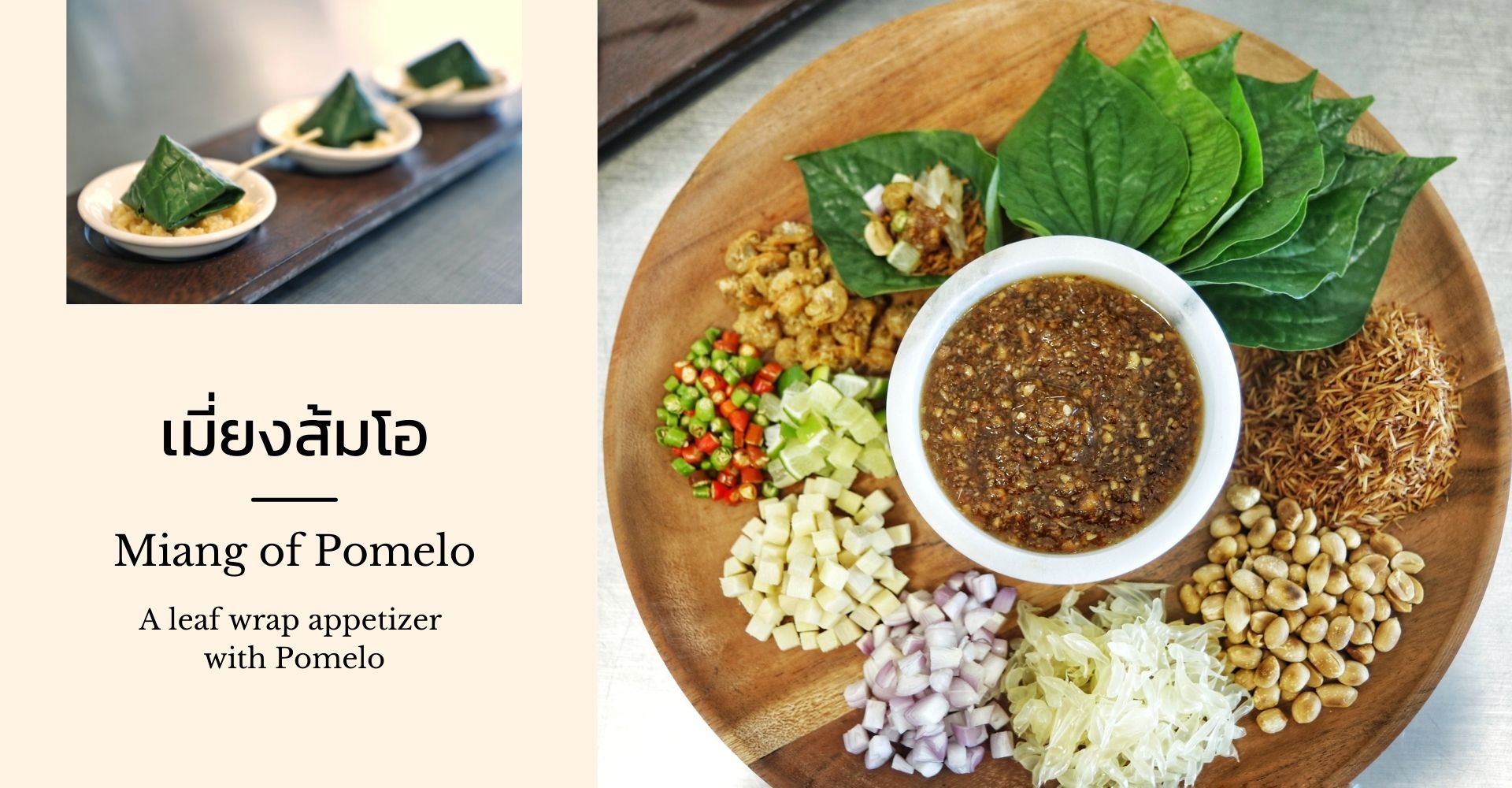
Describe the photo of this Thai snack dish published in this issue. Why did you choose this dish?
Today's dish is Miang Som Oar, which is slightly modified version of the Miang Kham dish . Pomelo pulp is added to the Miang to add a refreshing sweet and sour taste, and crispy fried dried shrimp to add a crunchy texture, making this Thai snack dish easier to eat and more flavorful. Actually, Miang Kham is a dish that Thai people are quite familiar with, simple and can be easy to find. It is also a dish that can be called a family snack. By inserting various ingredients into the wild pepper leaves it will bring different levels of flavour during eating.
If any family makes Miang Kham by themselves, it can also create another way for the family to interact. When making Miang Kham, there are many steps that need to be done so family members of all ages can help each other out. There are easy elements and more difficult, so everyone can join in with making. Therefore, Miang Kham is viewed as a dish that uses the definition of Thai snacks in its entirety, from the process of making to the process of eating together. Personally, I'm familiar with this dish because it's a dish that my family likes to make, especially during holidays or term breaks, because it has to be done in many steps. Putting pomelo into it is due to the fact that pomelo is a fruit in the garden that we have. Sometimes pomelo fruit is not sweet and can be a little sour so it is used in many dishes and Miang Kham is one of them. Back in my childhood, helping to cook in the kitchen was fun. Although the responsibilities are not that many, they are all part of making the dish. For example, removing the peanut shell after roasting is complete; a duty I believe that every child will like because they can eat it. Or having to help pick the leaves off the tree in order to add them to the dish is an activity that is fun, will fill their stomach and they will learn cooking techniques without realising it.
What is the history of this snack and where did it originate?
If talking about history, as far as I know, the culture of eating Miang is the culture of the Lanna people that have existed for a long time. By eating Miang made from fermented tea leaves, whether it is eating after meals, or a snack between meals, or using it to welcome guests who visit your home. The ingredients that can be eaten with fermented tea leaves may vary depending on the house that it is prepared in. It is also used in rituals such as merit-making and weddings. The culture of eating Miang has spread to the central region, which is believed to have come from the northern lords who came to the government to bring Miang leaves. The culture of eating Miang has spread to other areas. There is also an option to adapt it, especially in finding substitutes for fermented tea leaves, which were difficult to find in the old days. Therefore, many different types of Miang were invented to match the raw materials and eating methods of the people in that area resulting in a variety of Miang which is still a popular dish today.
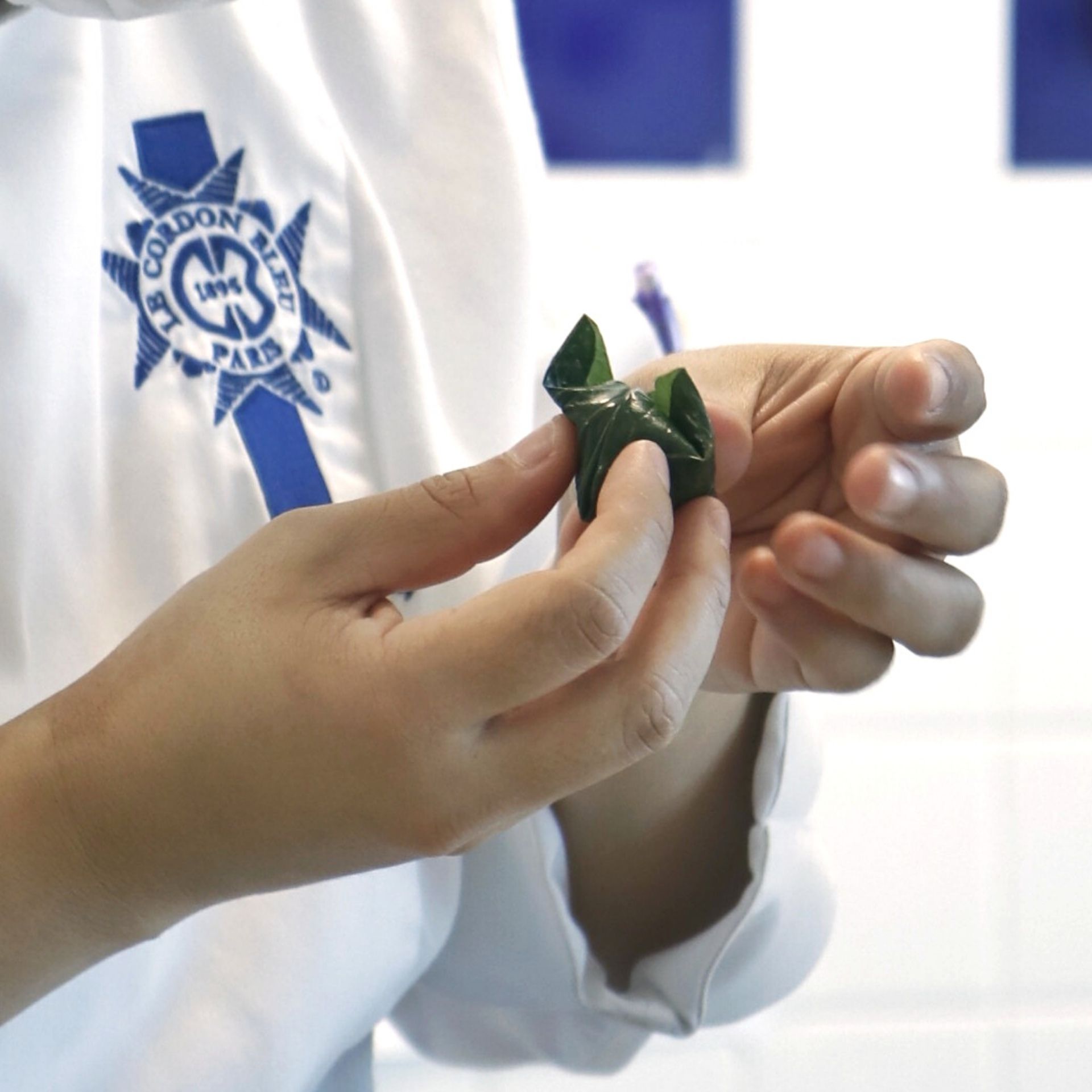
What is the flavor and distinctiveness of this Thai snack? also the difficulty of making this dish and the most important point?
The Thai snack Miang Kham is a full-flavoured dish where each ingredient has a different taste and texture. Spicy, sour, bitter, astringent, sweet and also oily, which seems like each element is unlikely to be compatible, but every component that is included in one mouthful, combines everything together to create a perfect harmony. It is a dish that is fun to eat. Once eaten, it also creates a sensation of building layers of taste in the mouth which is exciting, because the deliciousness of this dish comes from the uniqueness of the ingredients that come together in one word. Therefore, the heart of this dish is the selection of fresh ingredients, the right size, and meticulous preparation. It will allow the best smell and taste of this dish to come out easily, for example, limes should be selected with thin, clear skin, not too bitter. The coconut should be a thick coconut, cut into thin strips and roasted over low heat until it's yellow and fragrant, and the sweetness of the coconut will be at its fullest. Gently roasted peanuts, cooked until the insides hold no smell, picked out of the shell. Medium-aged ginger that is not spicy or has tough fibers that are difficult to chew, and a small garden chilli that is both spicy and fragrant. Thai shallots, cut into small pieces with a mildly sweet and spicy flavor, wild pepper leaves that have been washed well. Small dried shrimps that are not too salty. Miang sauce that has been simmered in a way that is mellow, fragrant, and thick enough. In this dish, there will be dried pomelo, sour, sweet, not too juicy, added to make it easy to eat and more enjoyable. Miang Kham is a simple and delicious dish that has extraordinary intenseness. But I believe that it is a dish that is not too difficult to try because of the ingredients that can be found during every season. It can be further customized to make it fun and as appetizing as you like. It's also a family activity that people of all ages together to enjoy.
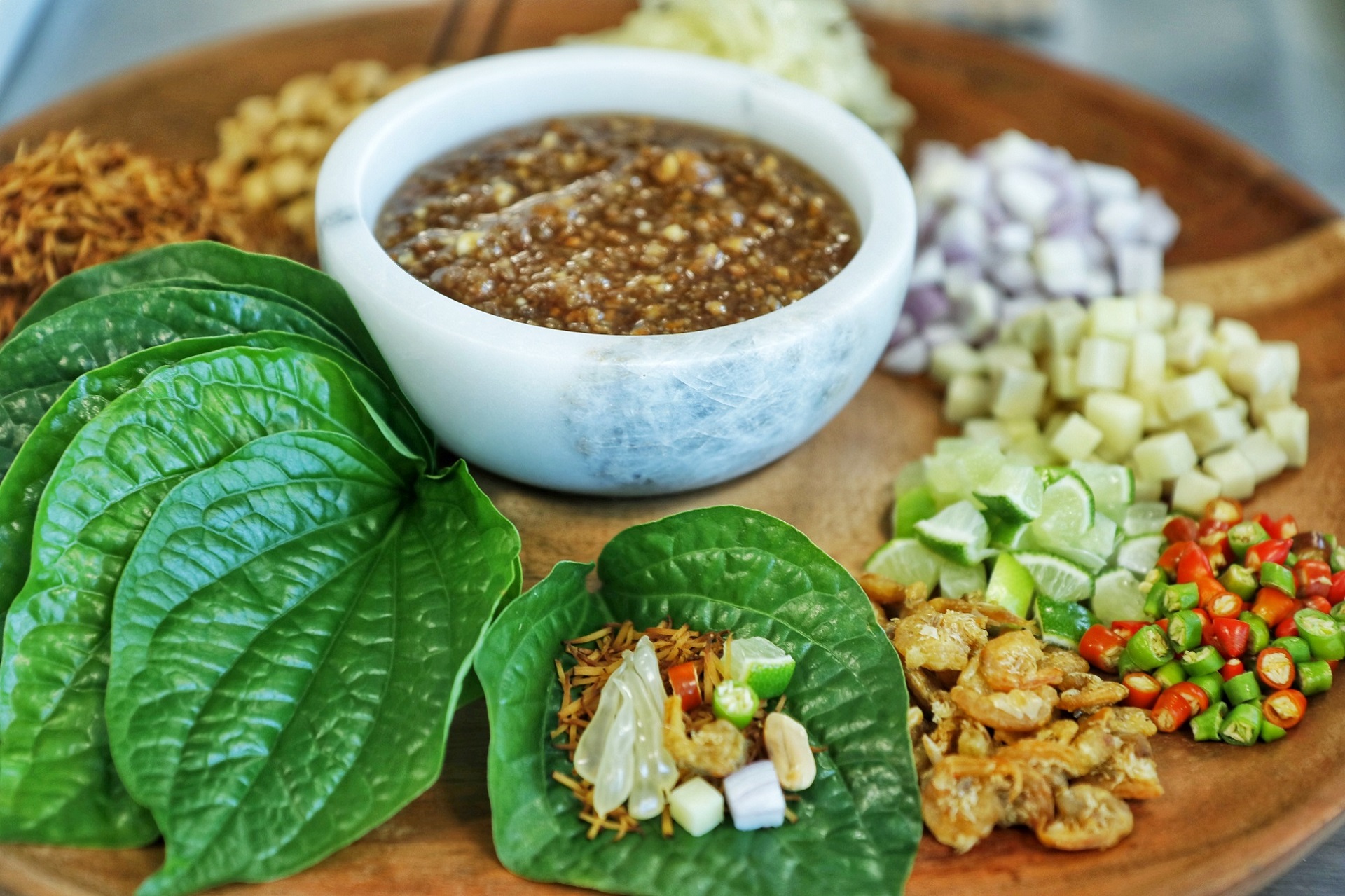 Beyond Thank You: Thai Cuisine Chef Instructors and Chef's Assistant Team, Le Cordon Bleu Dusit.Interviewed by Gourmet & Cuisine Magazine
Beyond Thank You: Thai Cuisine Chef Instructors and Chef's Assistant Team, Le Cordon Bleu Dusit.Interviewed by Gourmet & Cuisine Magazine
Special Thanks: Mr.Robert Veitch, Le Cordon Bleu Dusit Student Ambassador.
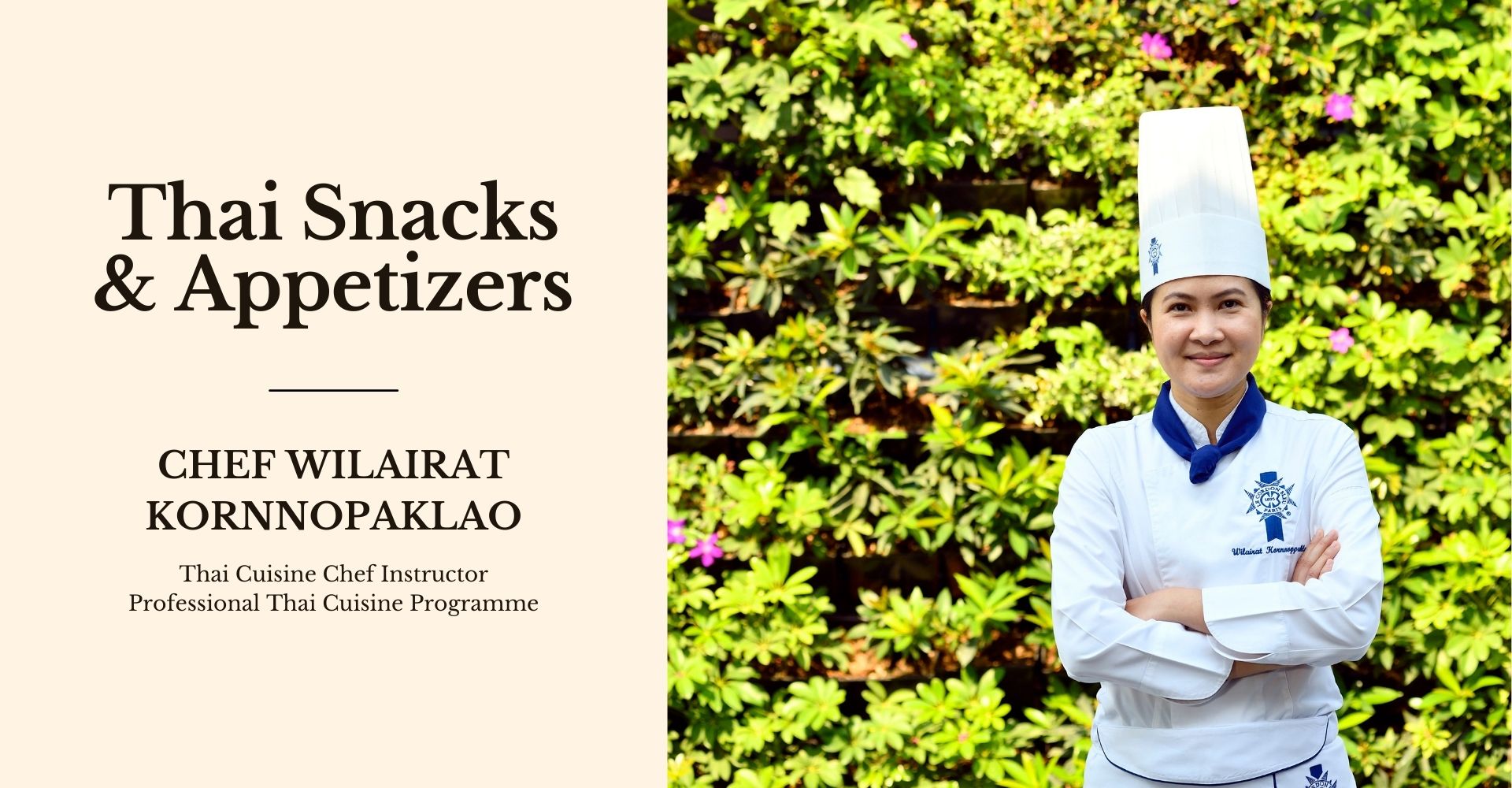 An exclusive interview with Chef Wilairat Kornnopaklao, Thai Cuisine Chef Instructor from Le Cordon Bleu Dusit Culinary School in the column "Chef's Signature Dish" of Gourmet and Cuisine Magazine. Chef Wilairat talks about Thai snacks and appetizers and also creates a special recipe as for her signature's dish called "Miang of Pomelo" which is popular among Thai people. The ingredients are easy to find in Thailand and the method is easy to cook at home.
An exclusive interview with Chef Wilairat Kornnopaklao, Thai Cuisine Chef Instructor from Le Cordon Bleu Dusit Culinary School in the column "Chef's Signature Dish" of Gourmet and Cuisine Magazine. Chef Wilairat talks about Thai snacks and appetizers and also creates a special recipe as for her signature's dish called "Miang of Pomelo" which is popular among Thai people. The ingredients are easy to find in Thailand and the method is easy to cook at home. In addition, some dishes have a history or a meticulous process that can be used as a story to tell customers while serving, to create more of a dining experience, and the process of making the elaborate work that tells the chef's story through the food or the description of the dish. It is another selling point that makes the shop more interesting as well.
In addition, some dishes have a history or a meticulous process that can be used as a story to tell customers while serving, to create more of a dining experience, and the process of making the elaborate work that tells the chef's story through the food or the description of the dish. It is another selling point that makes the shop more interesting as well.

